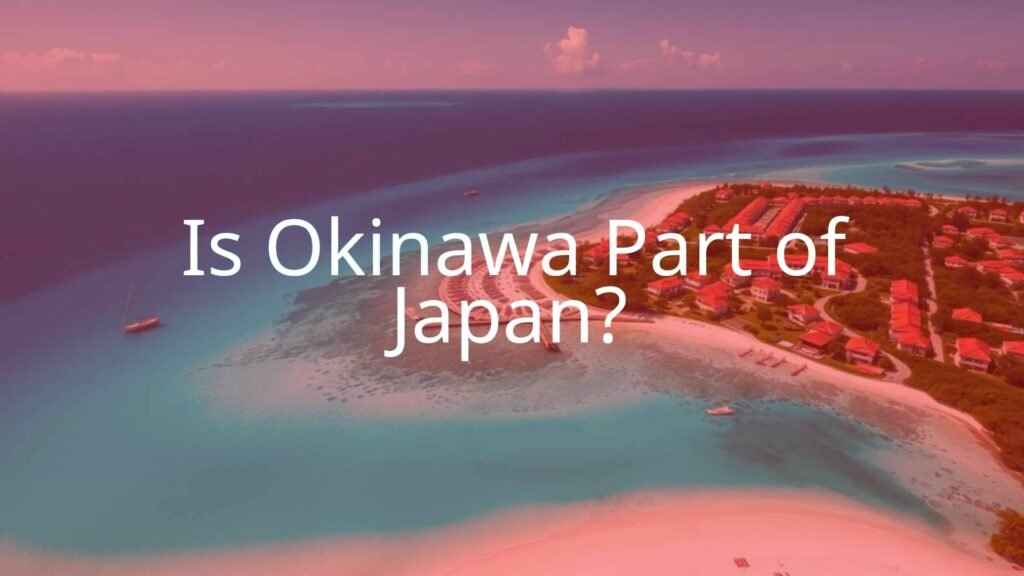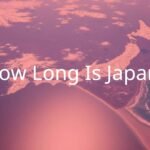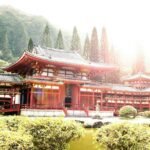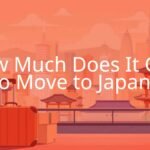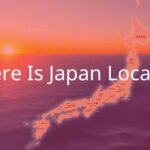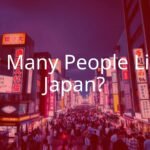Yes, Okinawa is definitely a part of Japan. Officially named Okinawa Prefecture (沖縄県, Okinawa-ken), it is Japan’s southernmost and westernmost region. Okinawa’s special culture and location often lead to questions about its connection to Japan, but it has been fully part of the country for more than 100 years. However, Okinawa’s past is unique, and it went through many different governments before joining Japan.
Okinawa Prefecture lies in the southern part of the Kyushu area and covers over 160 islands, both big and small. These islands stretch about 1,000 kilometers from northeast to southwest. The capital city is Naha, located on Okinawa Island, which is the largest and most crowded island. Around 1.4 million people live in Okinawa as of September 1, 2024. Okinawa is famous for its warm weather, special traditions, and important location for defense.

What Is Okinawa’s Political Status?
Okinawa is one of the 47 prefectures (similar to states) in Japan. It follows Japanese laws and has its own local government with Governor Denny Tamaki leading the administration. The local assembly has 48 members, and the Liberal Democratic Party is the largest group in the assembly. Okinawa also sends representatives to the national parliament (Diet).
While Okinawa is clearly a part of Japan, there is still some tension because of the large number of American military bases on the islands. Okinawa makes up just 0.6% of Japan’s land, but about 74% of all U.S. military bases in Japan are there, taking up almost 18% of the main island. Because of this, people often hold protests and discussions about moving Marines out of some bases, such as Futenma. These talks are about how to divide security responsibilities in Japan, not about whether Okinawa is Japanese.

Why Do Some People Wonder If Okinawa Belongs to Japan?
This question comes up mostly because of Okinawa’s long and different history. For hundreds of years, Okinawa was the Ryukyu Kingdom, an independent country known for trading with China, Japan, and other Asian countries. This created a culture, language, and local customs very different from other parts of Japan.
Also, after World War II, Okinawa was run by the United States from 1945 to 1972. After the war’s Battle of Okinawa, the islands were controlled by the U.S. military for 27 years before returning to Japan in 1972. The U.S. kept many bases on Okinawa after giving the islands back, which added to the feeling of difference. While only a small group of people in Okinawa wants independence (just 3% in a 2022 poll), the area’s history and the military bases make Okinawa’s connection to Japan a topic of ongoing conversation.
How Did Okinawa’s History Shape Its Relationship with Japan?
Okinawa’s ties to Japan grew through periods of independence, cultural exchange, being taken over, fighting in war, and foreign rule. These events have made Okinawa different from the rest of Japan and affected how Okinawans see themselves and the country as a whole.
Ryukyu Kingdom and Its Independence
Before becoming part of Japan, Okinawa was the center of the Ryukyu Kingdom. This kingdom formed in 1429 when Sho Hashi united three small regions on Okinawa Island. The Sho family led a thriving trading empire, dealing with China, Japan, and other Asian areas. Trade brought many new skills, foods, and customs to the islands, and Ryukyuan language and arts grew apart from Japan’s. Ryukyu’s music (using the sanshin instrument), dances like kumi-odori, and Chinese-style ceremonies were signs of its own strong identity. The kingdom also acted as a key entry point for continental ideas and products coming into Japan. This time gave Okinawa a cultural base that is still strong today.

Becoming Part of Japan in the 1800s
Ryukyu’s freedom started shrinking in 1609, when the Satsuma clan from southern Japan invaded and forced the king to be loyal to them. The kingdom could still handle its own local politics and keep up ties with China, but it lost a lot of power. This “double loyalty” continued for two centuries.
When Japan’s central government, the Meiji Restoration, began big changes in the 1800s, it looked to control its borderlands. In 1872, Japan made the Ryukyu Kingdom into the Ryukyu Domain and, in 1879, officially replaced the kingdom with Okinawa Prefecture, moving the last king to Tokyo. Although some Ryukyuan nobles protested, Japan ended Ryukyu’s rule, especially after beating China in the First Sino-Japanese War in 1894-1895. Okinawa became a regular part of Japan after this period.
U.S. Control and Returning to Japan (1945-1972)
World War II created more changes for Okinawa. In 1945, the Battle of Okinawa destroyed much of the island and killed about a quarter of its people. The U.S. then took charge of the islands, first with a military government and later a civilian one. For 27 years, Okinawa was an important U.S. military base area, especially during the Korean and Vietnam Wars. The U.S. called Okinawa the “Keystone of the Pacific” because of its location.

As the years went on and during the Vietnam War, more Okinawans wanted to return to Japan and reduce the military bases. In 1972, after a special agreement, the U.S. gave Okinawa back to Japan, but large American bases stayed and continue to stir up debate even now.
Modern Protests and Requests for More Local Power
Ever since returning to Japan, disputes have continued over the American bases. Even though Okinawa is less than 1% of the nation’s land, it holds about two-thirds of all U.S. troops based in Japan. This situation has led to more people asking for more local control or fewer bases. Crime and other problems around the bases-such as a well-known crime by U.S. servicemen in 1995-have strengthened protests, and a 2019 vote showed that more than 70% of locals opposed land being used for a new U.S. base.
| Attribute | Details |
|---|---|
| Status | Japanese Prefecture |
| Location | Southernmost/westernmost part of Japan, Kyushu region |
| Number of Islands | 160+ |
| Population (2024) | About 1.4 million |
| Capital | Naha |
| Governor | Denny Tamaki |
| Key Issue | High presence of U.S. military bases |

These ongoing arguments show the difference between Okinawa’s local identity and Japan’s policies about national defense. The Japanese government helps Okinawa financially because of the bases, and some jobs come from them, but many people feel their voices aren’t always heard. Most Okinawans don’t support breaking away from Japan-they prefer either more say in their own affairs or to keep the system as it is, within Japanese democracy.
FAQs: Is Okinawa Part of Japan?
Was Okinawa Ever Its Own Country?
Yes, Okinawa used to be an independent country called the Ryukyu Kingdom from 1429 to 1879. During this time, it created its own language, religion, customs, and government. The Ryukyu Kingdom was known for its sea trade with China, Japan, and other Asian countries, acting as a middleman for goods and ideas. Its culture grew apart from Japan’s, with its unique music, martial arts (karate started here), and beliefs common even now. Even though it came under the control of the Japanese Satsuma clan in the 1600s, it kept up its king and its tradition until Japan made it a prefecture in the late 1800s.
How Is Okinawa Run as a Part of Japan?
Okinawa is run like any other Japanese prefecture. It has a local governor (currently Denny Tamaki) and a prefectural assembly that decides local policies and laws. The main city, Naha, is the region’s center for government, business, and culture. Okinawa is split into 11 cities, 11 towns, and 19 villages, each with their own local offices. The region also chooses people to represent them in Japan’s national government (Diet). The Japanese government gives Okinawa special support because of the U.S. military presence. The local government looks after things like public schools, health services, and roads, but Okinawa is completely within the Japanese national system.
- What Is a Maiko? - July 13, 2025
- What Does Domo Arigato Mean? - July 12, 2025
- What Does Naruto Mean? - July 12, 2025

